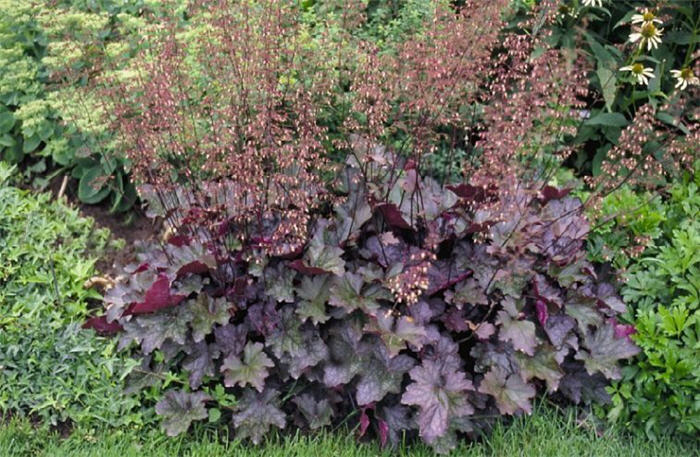| Botanical Name: Heuchera | |
| Common Name: Coral Bells |

-
Anatomy
-
Culture
-
Design
Plant Type
Ground cover, Perennial
Height Range
Under 1', 1-3'
Flower Color
Pink, Red, White
Flower Season
Spring, Summer, Intermittent
Leaf Color
Bronze, Gold, Green, Yellow Green, Purple, Red, Silver, White, Variegated
Bark Color
n/a
Fruit Color
n/a
Fruit Season
n/a
Sun
Full, Half, Shade
Water
Medium
Growth Rate
Moderate
Soil Type
Clay, Loam
Soil Condition
Average, Rich, Well-drained, Dry
Soil pH
Neutral
Adverse Factors
n/a
Design Styles
English Cottage, Formal, Woodland
Accenting Features
Showy Flowers, Unusual Foliage
Seasonal Interest
Spring, Summer, Fall
Location Uses
Entry, Perennial Border, Shrub Border, Foundation, Parking Strip, Patio, Raised Planter, Walkways
Special Uses
Container, Cut Flowers, Mass Planting, Small Spaces
Attracts Wildlife
Hummingbirds
Photographer:
-
Description
-
Notes